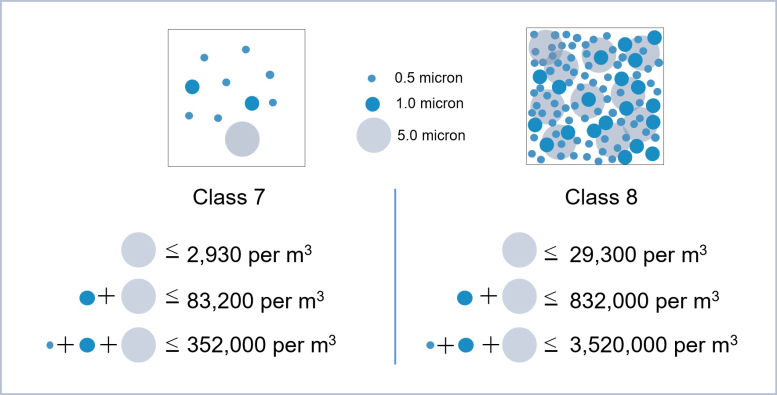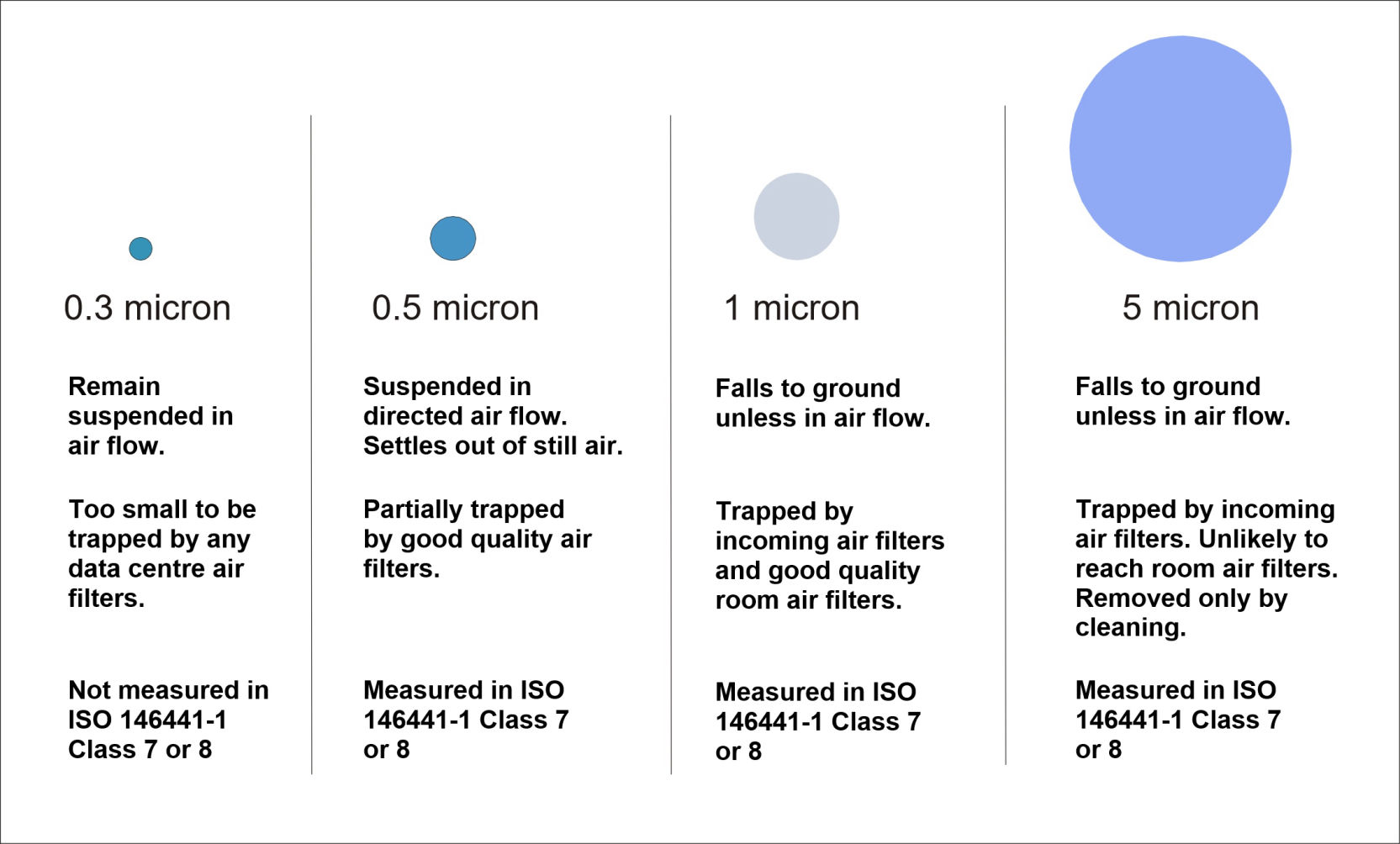
A Guide to Particle Measurements and ISO 14644-1:2015 in a Data Centre
Although applicable to all different types of technical spaces, the International Standards Organisation’s Clean Rooms and Associated Controlled Environments. Part 1 Classification of Air Cleanliness by Particle Concentration (ISO 14644-1:2015) has been adopted by most of the data centre community to characterise data centre environmental cleanliness. Technical spaces are classified as ISO Class 1 through to ISO Class 9. Class 1 describes the cleanest environments such as those found in silicon chip clean rooms. ISO Classes 7 and 8 are considered the most appropriate standards for IT facilities.

To be classified as a Class 7 environment, there can be no more than 352,000 particles of a size 0.5 micron or larger per cubic metre of air (pcm). Class 8 allows 3,520,000 such particles pcm and each class also has limits on the number of 1 and 5 micron particles allowed.
Class 7 and Class 8 ISO standards do not specify any limits on particles smaller than 0.5 micron. However, to be eligible for a Class 1 to Class 6 rating, smaller particles (0.3 um and smaller) must be measured and limited. In a data centre environment, air filters that block particles smaller than 0.5 micron would also dramatically impede air flow. Therefore, although Class 6 would signify a ‘cleaner’ room, it may come at a higher cost to cooling than is practical.
In any environment, particles above 1 micron in size will eventually fall to ground and, unless disturbed or removed by cleaning, will remain there. A few such particles may reach filters when carried in directed air flows and will be trapped but the majority can be removed from the environment only by detailed cleaning.

Particles smaller than 0.5 micron pass through the filters and are not efficiently removed from the room but instead remain circulating. The 0.5 micron size is affected by sedimentation in still air, and by filtration from air flows. That is why this particular size is used as a reasonably realistic marker for room preparation, cleanliness and potential cleanliness.
Particles are measured using a particle counter. We follow the latest ISO standard method which specifies the frequency of sampling locations for any particular space. In addition, we also take measurements at other known risk areas such as fresh air intake, AHU exhausts, around doors etc. We then interpret, fully explain and present the measurements in a report. If we spot an anomalous reading, we will attempt to find the reason. All our particle counters are calibrated annually. Although not necessary for data centres, we can, if requested, measure particles as small as 0.1 micron, which is a requirement for ISO Class 6 or better.
On-site ISO 14644-1 Particle Testing